A Guide to the Most Beautiful Varieties of Bleeding Heart to Grow in Your Garden
Published: October 29, 2025 at 10:11:28 PM UTC
Few plants capture the romantic imagination quite like Bleeding Hearts. With their distinctly heart-shaped blooms dangling elegantly from arching stems, these woodland treasures bring charm and whimsy to shaded garden spots. Whether you're enchanted by the classic pink hearts, drawn to pure white varieties, or intrigued by newer cultivars with unique colors and forms, there's a Bleeding Heart variety perfect for your garden.
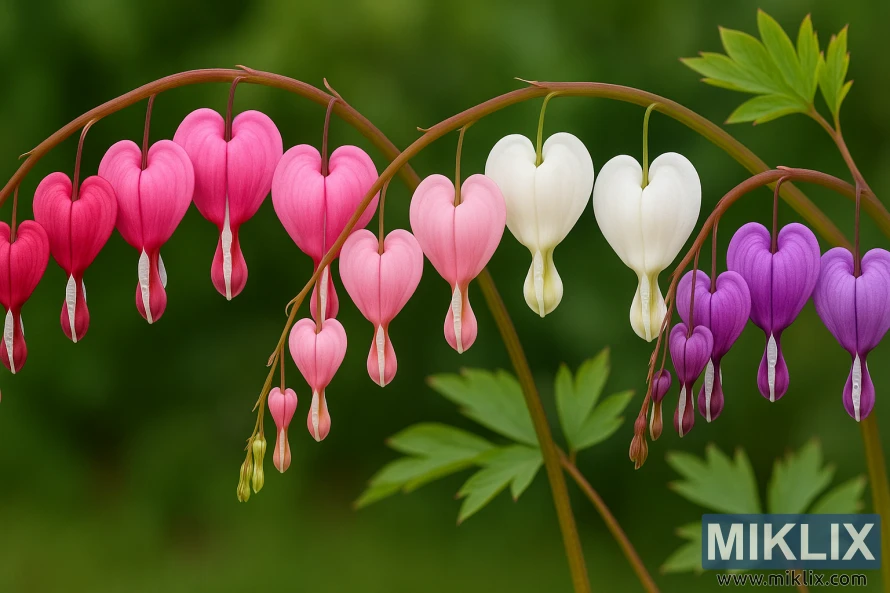
In this comprehensive guide, we'll explore the most stunning Bleeding Heart varieties, their unique characteristics, and how to help them thrive in your landscape.
Understanding Bleeding Hearts: Nature's Romantic Perennials
Bleeding Hearts (botanical name Dicentra) are shade-loving perennials native to Eastern Asia and North America. These enchanting plants belong to a genus containing approximately 20 species, with most garden varieties derived from two main species: Dicentra spectabilis (Old-Fashioned Bleeding Heart) and Dicentra formosa (Pacific or Western Bleeding Heart).
What makes these plants truly special is their distinctive heart-shaped flowers that appear to have a droplet at the bottom—hence the romantic "bleeding heart" name. Beyond their sentimental appeal, these plants offer practical benefits: they thrive in shade, resist deer browsing, attract hummingbirds, and provide beautiful spring color when many other perennials are just waking up.
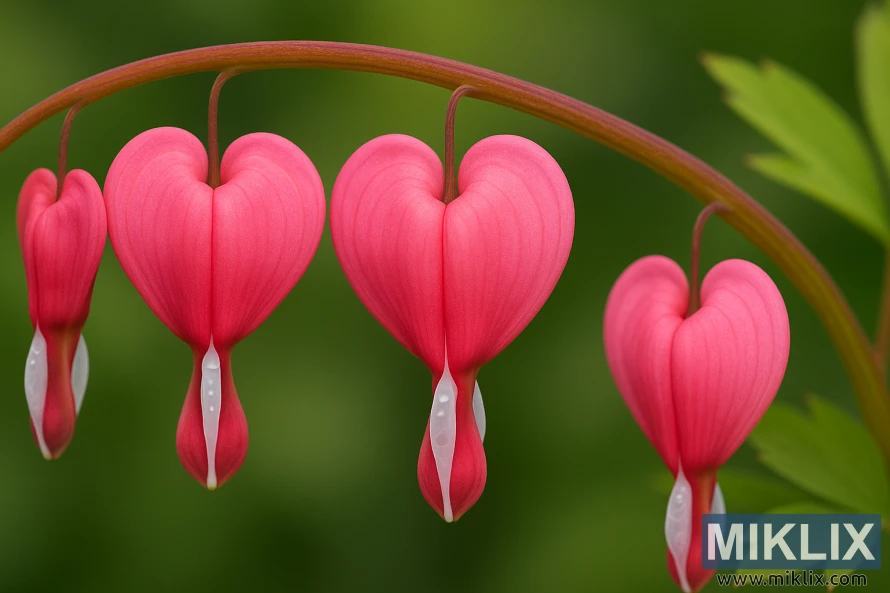
When Bleeding Hearts Bloom
Most Bleeding Heart varieties bloom in spring, typically from April through June depending on your climate. The Old-Fashioned types (D. spectabilis) generally bloom once and may go dormant in summer heat, while many of the fringed varieties (D. formosa) can rebloom in fall if conditions are favorable. Their early bloom time makes them perfect companions for spring bulbs and early-season woodland perennials.
Ideal Growing Conditions
Bleeding Hearts prefer partial to full shade, though they can tolerate morning sun in cooler climates. They thrive in rich, moist but well-drained soil with plenty of organic matter. Most varieties are cold-hardy in USDA zones 3-9, making them versatile additions to gardens across most of the United States. Their natural woodland habitat provides clues to their ideal growing environment: dappled shade, protection from harsh afternoon sun, and consistent moisture.
Classic Bleeding Heart Varieties
Old-Fashioned Bleeding Heart (Dicentra spectabilis)
The quintessential Bleeding Heart that has graced gardens for generations. This classic variety grows 2-3 feet tall and wide, with arching stems adorned with rows of pink heart-shaped flowers with white tips. The foliage is soft and fern-like, creating a lush backdrop for the dangling blooms. After flowering, this variety often goes dormant in summer heat, so plan companion plants accordingly.
Growing Requirements:
- Zones: 3-9
- Light: Partial to full shade
- Soil: Rich, moist, well-drained
- Bloom Time: Mid to late spring
- Height: 24-36 inches
Companion Plants:
- Hostas
- Ferns
- Astilbe
- Hardy Geraniums
- Spring-flowering bulbs
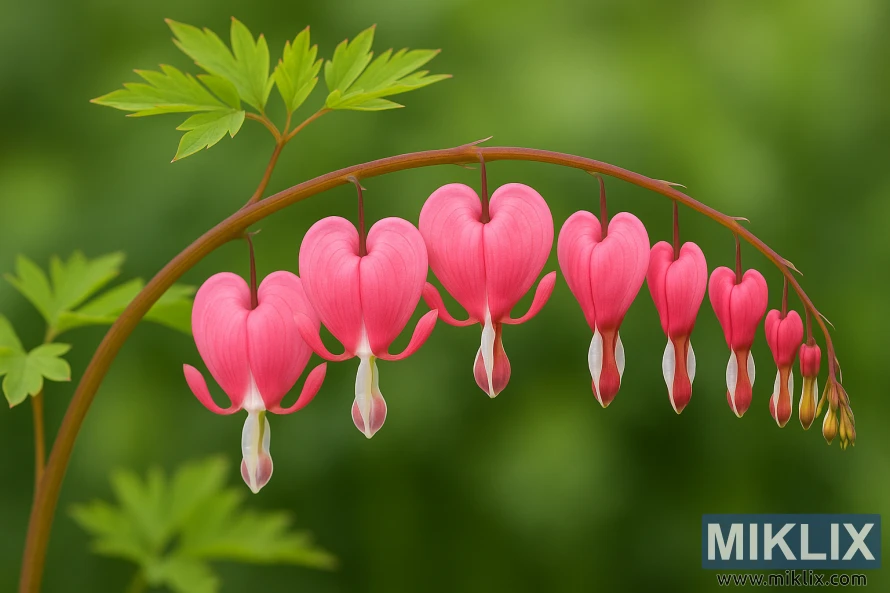
Alba (Dicentra spectabilis 'Alba')
The white-flowered form of the Old-Fashioned Bleeding Heart offers the same graceful habit but with pure white blooms that seem to glow in shady garden spots. This elegant variety creates a sophisticated presence in woodland gardens and pairs beautifully with blue and purple spring flowers. Like the pink form, it may go dormant in summer heat but will return reliably each spring.
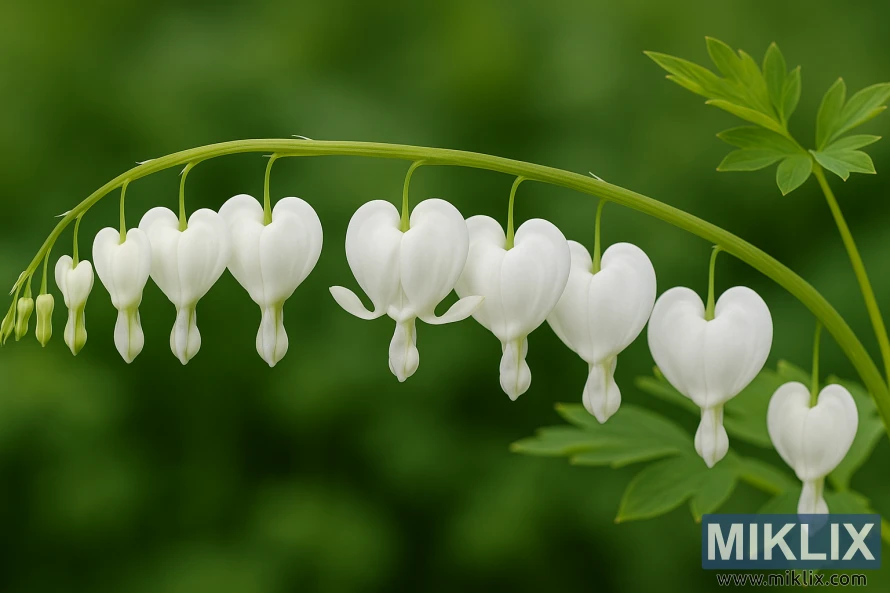
Add Classic Charm to Your Shade Garden
These timeless Bleeding Heart varieties bring romantic elegance to any shaded garden space. Their reliable performance and stunning blooms make them perfect for woodland gardens, shade borders, and cottage garden settings.
Modern and Unique Bleeding Heart Varieties
Valentine (Dicentra 'Valentine')
A stunning modern variety with cherry-red hearts dangling from burgundy stems above blue-green foliage. This hybrid combines the best traits of its parents, offering both the larger flowers of D. spectabilis and the longer bloom time of D. formosa. 'Valentine' makes a dramatic statement in the shade garden and pairs beautifully with silver and blue-foliaged plants.
Growing Requirements:
- Zones: 3-9
- Light: Partial to full shade
- Soil: Rich, moist, well-drained
- Bloom Time: Mid-spring to early summer
- Height: 24-30 inches
Special Features:
- Longer blooming season
- More heat tolerant than species
- Dramatic red color
- Attracts hummingbirds
- Deer resistant
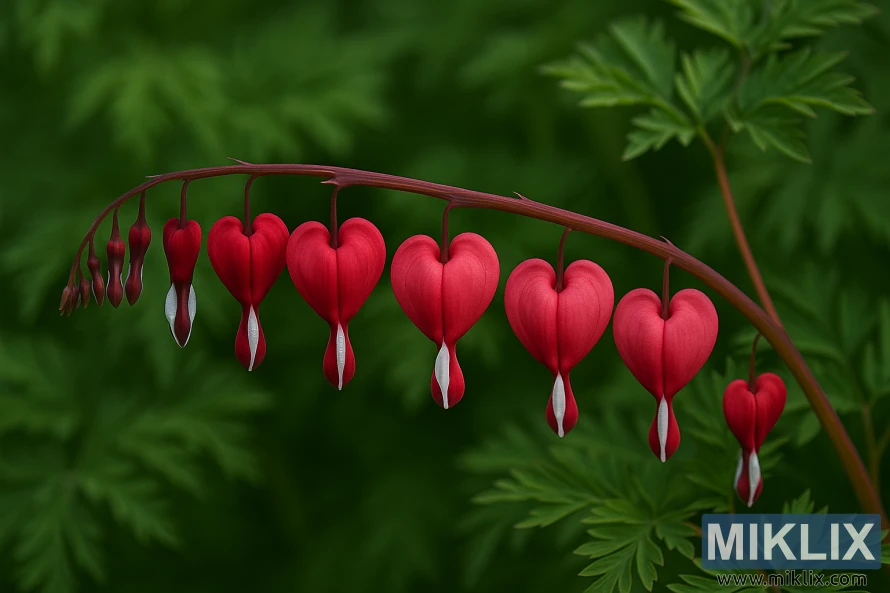
Gold Heart (Dicentra spectabilis 'Gold Heart')
A standout variety that features brilliant golden-yellow foliage instead of the typical green, creating a stunning backdrop for the traditional pink heart-shaped flowers. This cultivar brings a welcome splash of color to shady areas, with the golden foliage persisting even after the flowers fade. 'Gold Heart' is particularly effective when planted where dappled light can illuminate its glowing leaves.
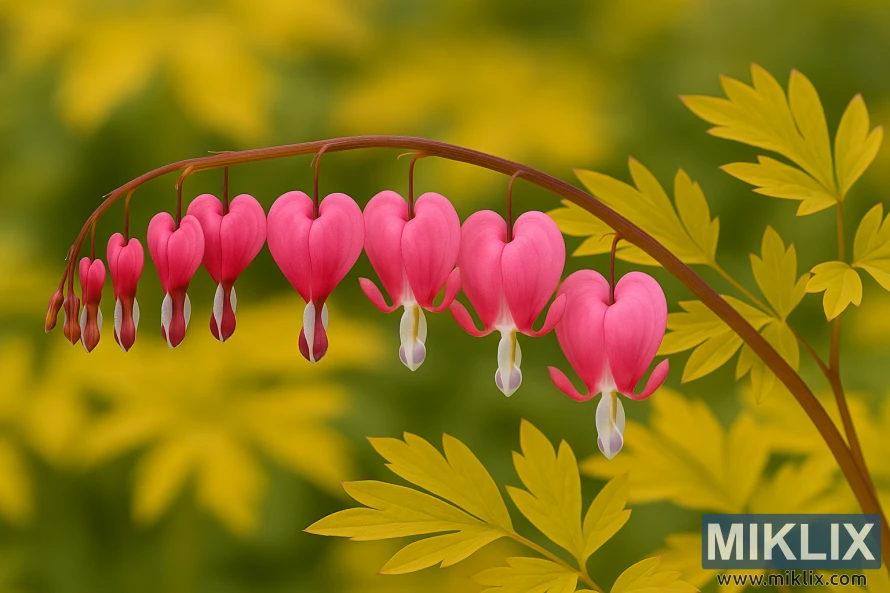
Burning Hearts (Dicentra 'Burning Hearts')
A compact fringed Bleeding Heart with intense cherry-red flowers that stand out dramatically against finely-cut blue-green foliage. This variety belongs to the fernleaf group (D. formosa hybrids) and offers a longer blooming season, often flowering from spring through fall with proper care. Its smaller size makes it perfect for front-of-border plantings and container gardens.
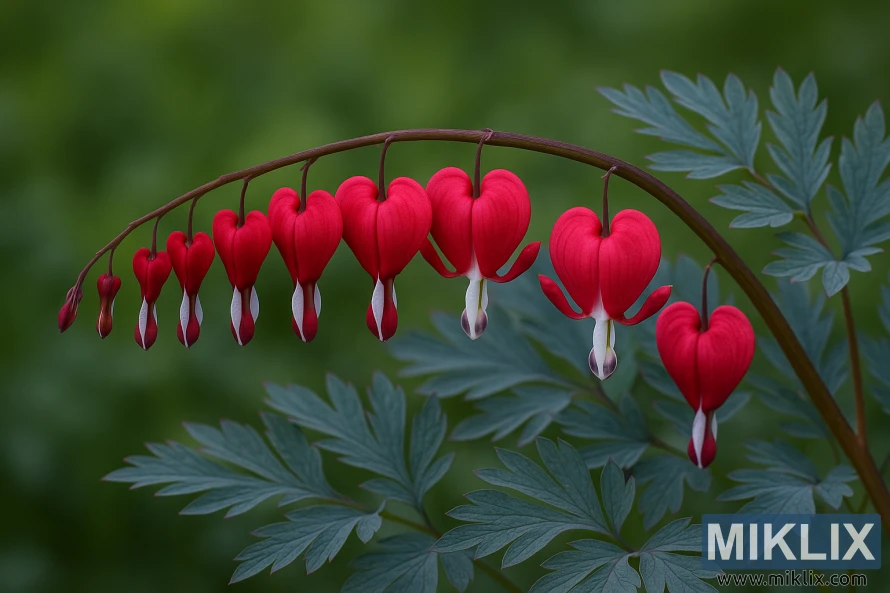
Bring Modern Elegance to Your Shade Garden
These contemporary Bleeding Heart varieties offer exciting colors and improved performance. Add these stunning selections to your garden for season-long interest and dramatic impact in shaded areas.
Compact and Reblooming Bleeding Heart Varieties
Luxuriant (Dicentra 'Luxuriant')
A reliable fernleaf type with deep rose-pink flowers that bloom above a compact mound of finely-cut foliage. Unlike the Old-Fashioned varieties, 'Luxuriant' typically doesn't go dormant in summer and will often rebloom in fall if deadheaded. This variety forms a neat, tidy clump about 12-15 inches tall, making it perfect for smaller gardens and mixed container plantings.
Growing Requirements:
- Zones: 3-9
- Light: Partial to full shade
- Soil: Rich, moist, well-drained
- Bloom Time: Spring to fall
- Height: 12-15 inches
Special Features:
- Reblooms throughout season
- Doesn't go dormant in summer
- Compact growth habit
- Excellent for containers
- Long-lasting cut flowers
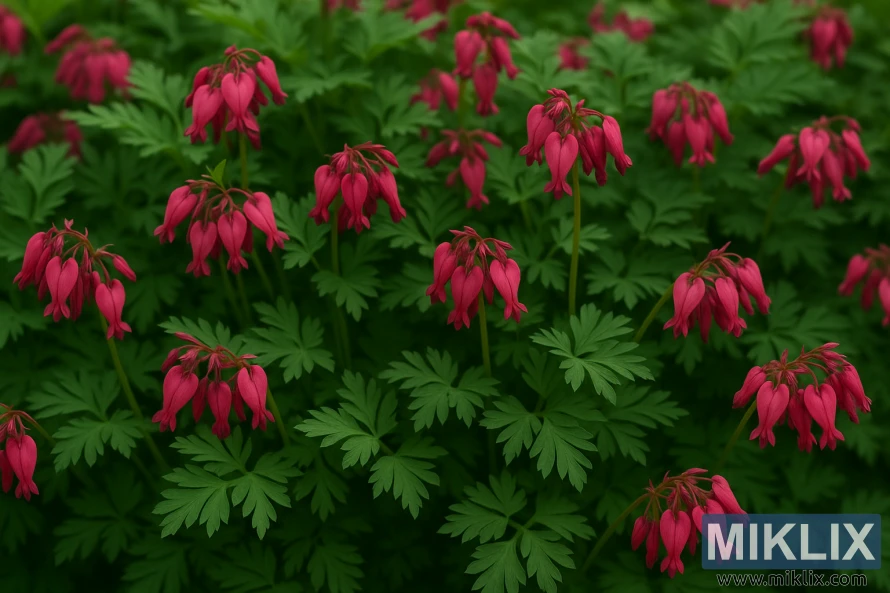
King of Hearts (Dicentra 'King of Hearts')
One of the most compact Bleeding Heart varieties, forming a neat mound just 8-10 inches tall with deep pink flowers. This diminutive variety packs a powerful punch with its profuse blooming habit and ability to flower from spring through fall. The blue-green foliage remains attractive all season, making it an excellent choice for edging, rock gardens, and container plantings.
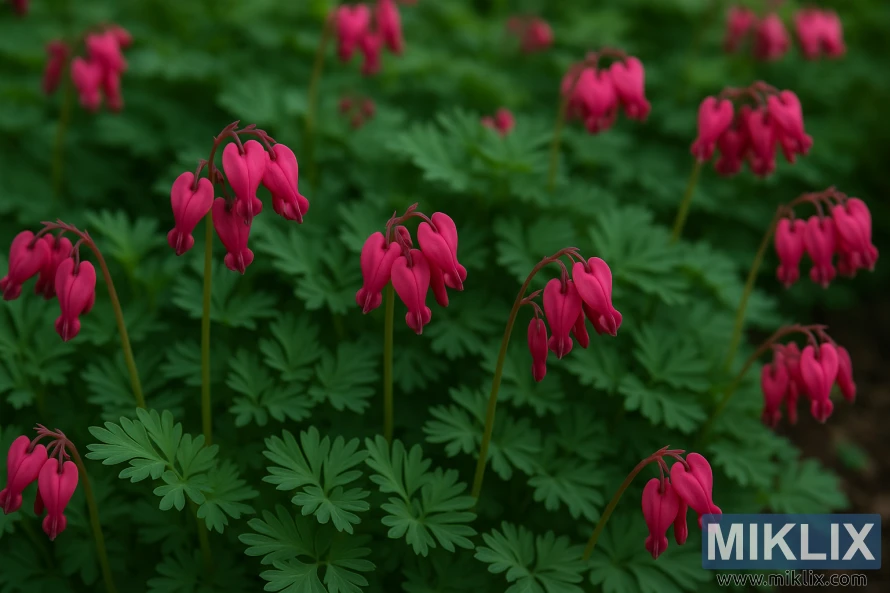
Aurora (Dicentra 'Aurora')
A delightful fernleaf variety with pale pink, almost blush-colored flowers that create a soft, romantic effect in the garden. Growing 12-15 inches tall, 'Aurora' forms a neat mound of finely-cut foliage that remains attractive throughout the growing season. This variety is particularly effective when planted in groups, creating a cloud-like effect of delicate blooms in the shade garden.
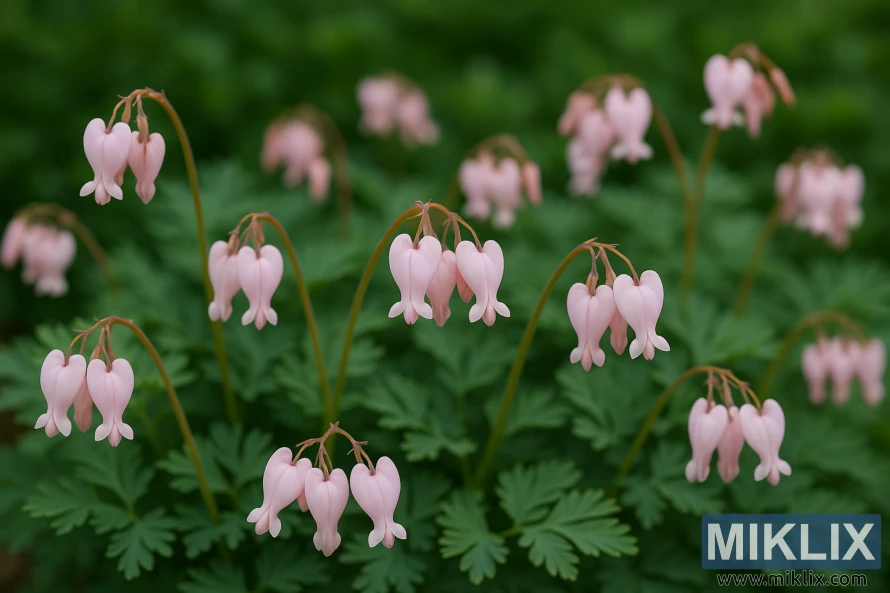
Planting and Care Tips for Bleeding Hearts
Planting Bleeding Hearts
The best time to plant Bleeding Hearts is in early spring or fall. Space plants according to their mature size—typically 18-24 inches apart for larger varieties and 12-15 inches for compact types. Plant with the crown (where stems meet roots) at soil level. After planting, water thoroughly and apply a 2-inch layer of mulch to help retain moisture and suppress weeds.
Step-by-Step Planting Guide:
- Choose a location with dappled shade or morning sun/afternoon shade.
- Prepare the soil by incorporating compost or well-rotted manure.
- Dig a hole twice as wide as the root ball but at the same depth.
- Position the plant with the crown at soil level.
- Backfill with soil and firm gently around the roots.
- Water thoroughly and apply mulch, keeping it away from the crown.
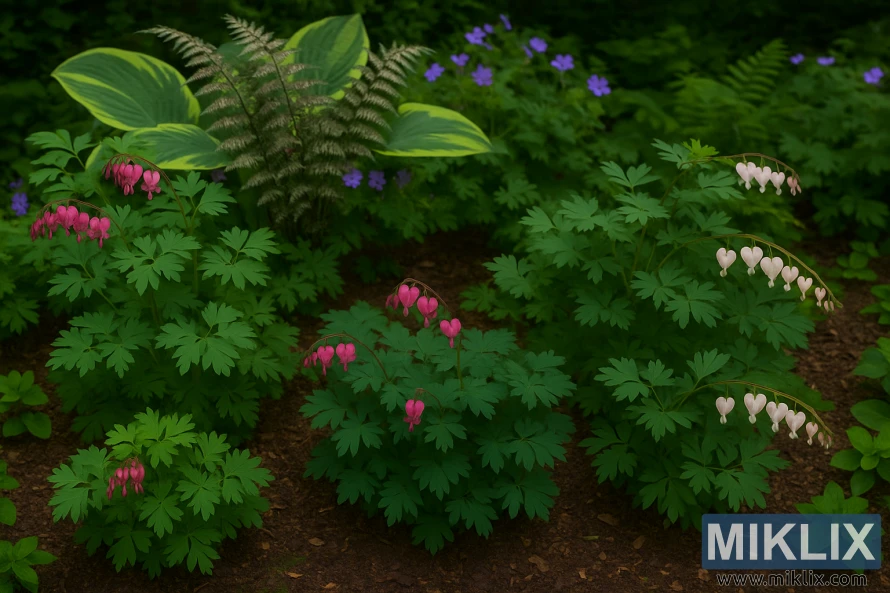
Seasonal Care
Bleeding Hearts require minimal maintenance once established. Water regularly during dry periods, especially for newly planted specimens. Apply a balanced, slow-release fertilizer in early spring as new growth emerges. For Old-Fashioned types that go dormant in summer, mark their location to avoid accidental disturbance and plant companions that will fill in the space.
Troubleshooting Common Issues
Yellowing Leaves
Usually indicates too much sun or insufficient moisture. Ensure consistent watering and consider relocating plants that receive too much direct sunlight.
Few or No Flowers
May be caused by insufficient light (even shade plants need some light), improper fertilization, or recent transplanting. Give plants a season to recover and adjust conditions as needed.
Early Dormancy
Old-Fashioned types naturally go dormant in summer heat. Ensure adequate spring moisture and mulch to extend the growing season, but plan for companion plants to fill in when dormancy occurs.
Companion Planting for Bleeding Hearts
Bleeding Hearts pair beautifully with other shade-loving perennials. Consider these companion plants to create a harmonious shade garden:
Early Season Companions
- Spring bulbs (tulips, daffodils)
- Pulmonaria (Lungwort)
- Brunnera (Siberian Bugloss)
- Hellebores (Lenten Rose)
- Primula (Primrose)
Mid-Season Companions
- Hosta varieties
- Heuchera (Coral Bells)
- Tiarella (Foamflower)
- Astilbe varieties
- Hardy Geraniums
Late Season Companions
- Japanese Anemones
- Tricyrtis (Toad Lily)
- Hakonechloa (Japanese Forest Grass)
- Kirengeshoma (Yellow Waxbells)
- Autumn ferns
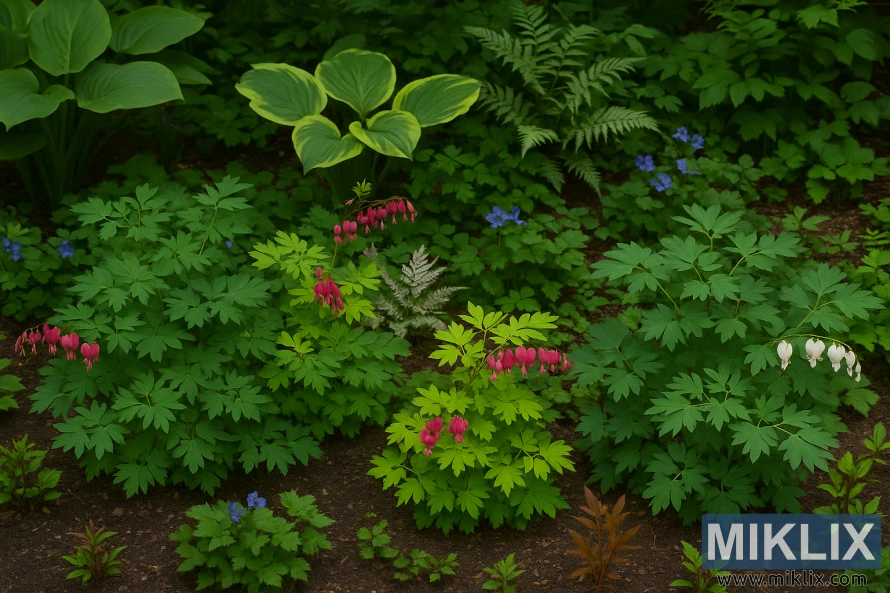
Garden Design Ideas with Bleeding Hearts
Woodland Garden
Create a naturalistic setting with Bleeding Hearts as focal points among ferns, wild ginger, and native woodland plants. Allow them to self-seed for a natural look, and incorporate fallen logs or stones for additional interest. The Old-Fashioned varieties are perfect for this setting, creating a romantic woodland scene.
Cottage Garden
Integrate Bleeding Hearts into a traditional cottage garden, pairing them with columbines, foxgloves, and hardy geraniums. The arching stems and heart-shaped flowers contribute to the romantic, slightly untamed aesthetic that defines cottage garden style. Mix varieties for extended seasonal interest.
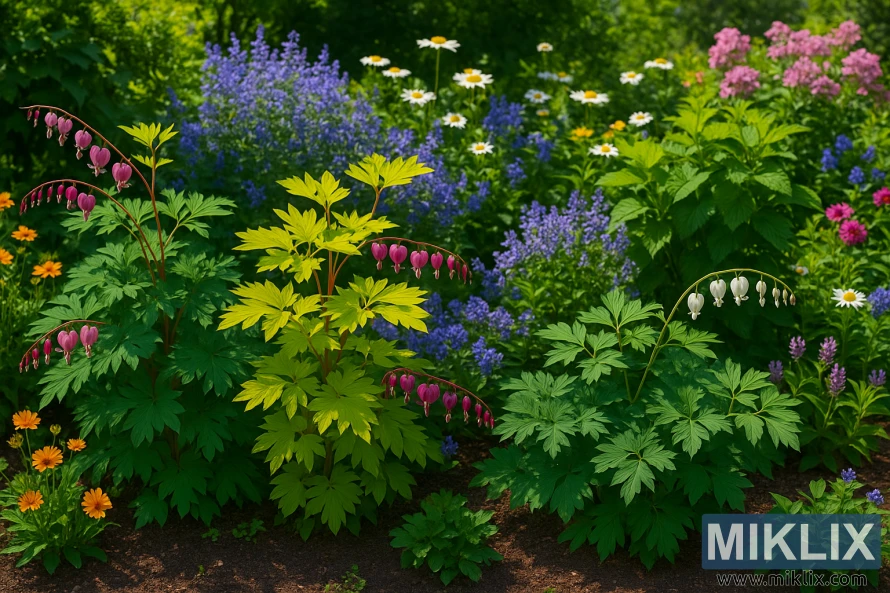
Container Garden
The compact fernleaf varieties make excellent container specimens. Plant them in large pots with trailing plants like variegated ivy or creeping Jenny. Position containers in shaded patios or entryways where the delicate flowers can be appreciated up close. Ensure consistent moisture for container-grown plants.
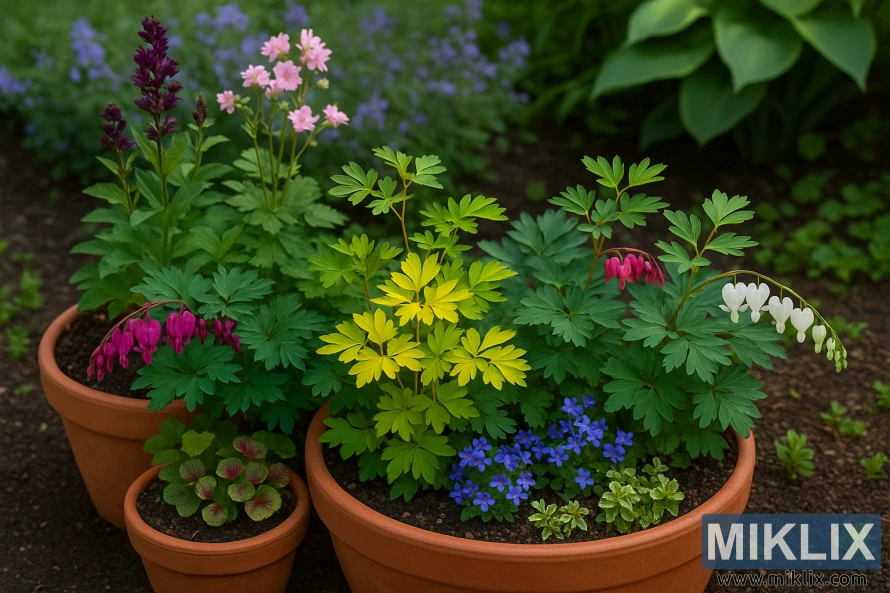
Conclusion: Embracing the Romance of Bleeding Hearts in Your Garden
Bleeding Hearts offer a perfect combination of romantic charm and practical garden performance. With varieties ranging from the classic Old-Fashioned types to compact rebloomers and unique color forms, there's a Bleeding Heart perfect for every shade garden. Their ability to thrive in challenging shady conditions, coupled with their distinctive heart-shaped blooms, makes them invaluable additions to woodland gardens, cottage plantings, and mixed perennial borders.
By selecting a mix of varieties, you can extend the blooming season and create diverse textural effects in your garden. The larger spectabilis types provide dramatic spring displays, while the compact formosa hybrids offer longer-lasting color and more heat tolerance. Combined with thoughtful companion planting, Bleeding Hearts can be the centerpiece of a shade garden that delights from spring through fall.
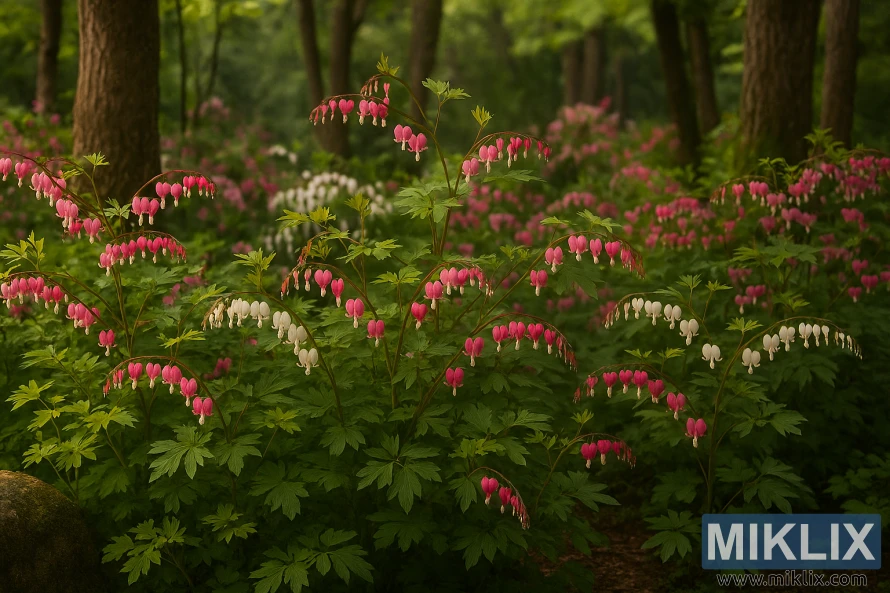
Further Reading
If you enjoyed this post, you may also like these suggestions:
- 12 Beautiful Coneflower Varieties to Transform Your Garden
- The Most Beautiful Varieties of Peony Flowers to Grow in Your Garden
- A Guide to the Most Beautiful Varieties of Black-Eyed Susan to Grow in Your Garden
